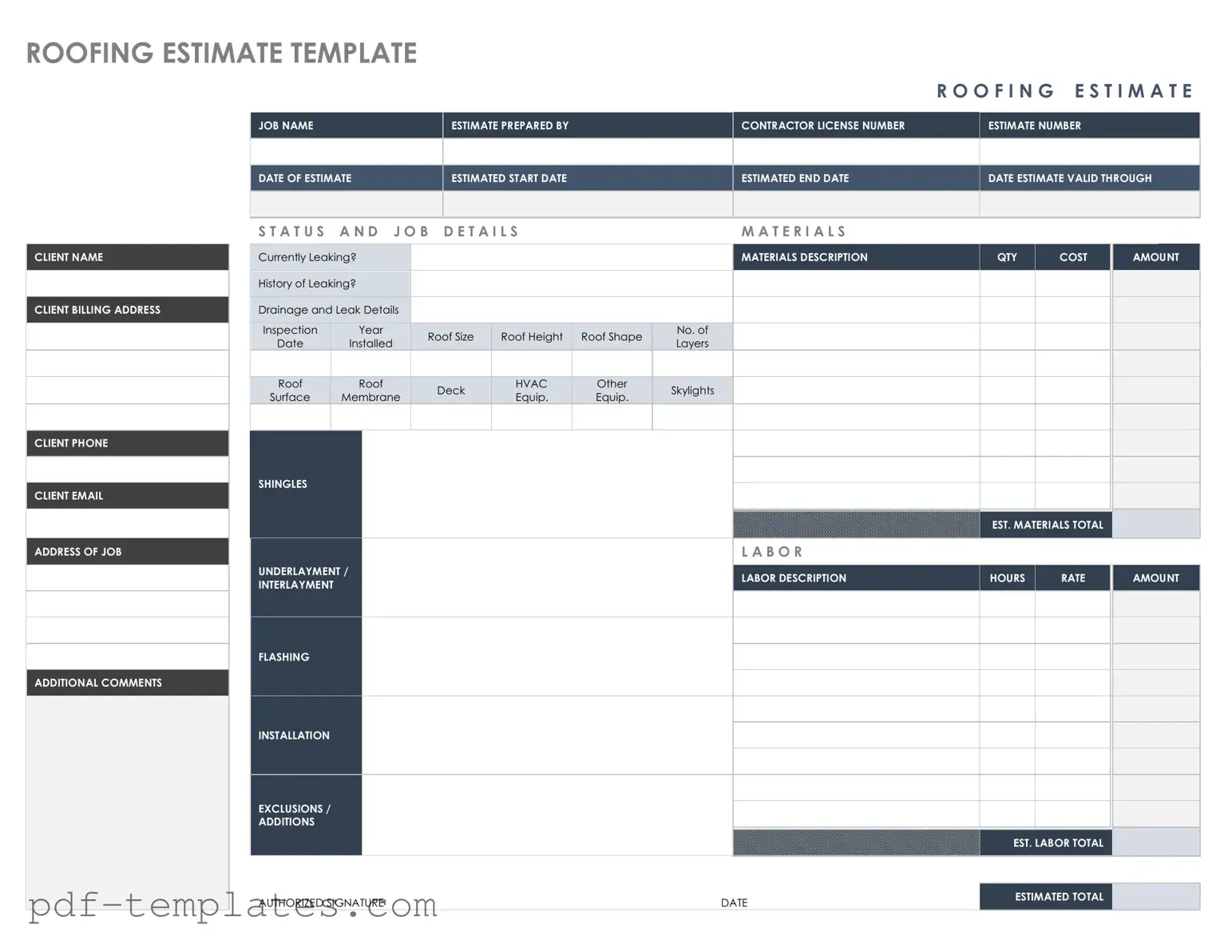The Roofing Estimate form shares similarities with the Construction Estimate form. Both documents provide a detailed breakdown of costs associated with a project. They typically include labor, materials, and any additional expenses that may arise. Just like a roofing estimate, a construction estimate helps clients understand the financial implications of a project before work begins, ensuring transparency and informed decision-making.
Another document that resembles the Roofing Estimate form is the Home Improvement Estimate. This form outlines the costs related to various home improvement projects, including roofing. It provides homeowners with a clear understanding of what to expect in terms of pricing and project scope, similar to the roofing estimate's objective of detailing specific roofing costs and services.
The Remodeling Estimate form is also akin to the Roofing Estimate form. Both documents are used to project costs for specific improvements or repairs. While a remodeling estimate might cover a broader range of renovations, it shares the same goal of providing a comprehensive overview of expenses, ensuring that clients can budget appropriately for their projects.
Additionally, the Landscaping Estimate form aligns closely with the Roofing Estimate. Both types of estimates detail the costs associated with specific services, whether it be roofing or landscaping. They serve to inform clients about the financial aspects of the work, allowing for better planning and execution of home improvement projects.
The HVAC Estimate form is another document that mirrors the Roofing Estimate. Both forms aim to provide a clear financial picture for clients considering upgrades or repairs. The HVAC estimate focuses on heating, ventilation, and air conditioning systems, while the roofing estimate zeroes in on roofing services. Nonetheless, both serve the same purpose of outlining expected costs and services.
The Electrical Estimate form can also be compared to the Roofing Estimate. Each document presents a detailed account of costs associated with specific services—electrical work in one case and roofing in the other. Both estimates help clients understand what to expect financially, facilitating better decision-making regarding home projects.
Understanding the various documents involved in construction projects is essential for both contractors and clients. One such document, the Asurion F-017-08 MEN form, plays a significant role in processing insurance claims related to electronic devices. This form serves as a formal request for assistance, ensuring that customers receive the support they need for their devices in a timely manner. To learn more about this important form, you can visit https://pdftemplates.info/asurion-f-017-08-men-form.
Similarly, the Plumbing Estimate form is akin to the Roofing Estimate. Both documents provide a breakdown of costs related to specific services. Whether addressing plumbing issues or roofing needs, these estimates help clients plan their budgets effectively and ensure they are aware of the financial commitments involved in their home repairs or improvements.
The General Contractor Estimate form also shares commonalities with the Roofing Estimate. This document provides an overall cost estimate for a variety of services, including roofing. Both forms help clients gauge the financial scope of their projects, making it easier to assess the feasibility and plan accordingly.
Lastly, the Insurance Claim Estimate form is similar to the Roofing Estimate in that both documents are often used in the context of repairs and replacements. When filing an insurance claim for roofing damage, an estimate is typically required to determine the costs involved. Both forms serve to outline expenses, ensuring that clients have a clear understanding of the financial aspects of their claims and repairs.
